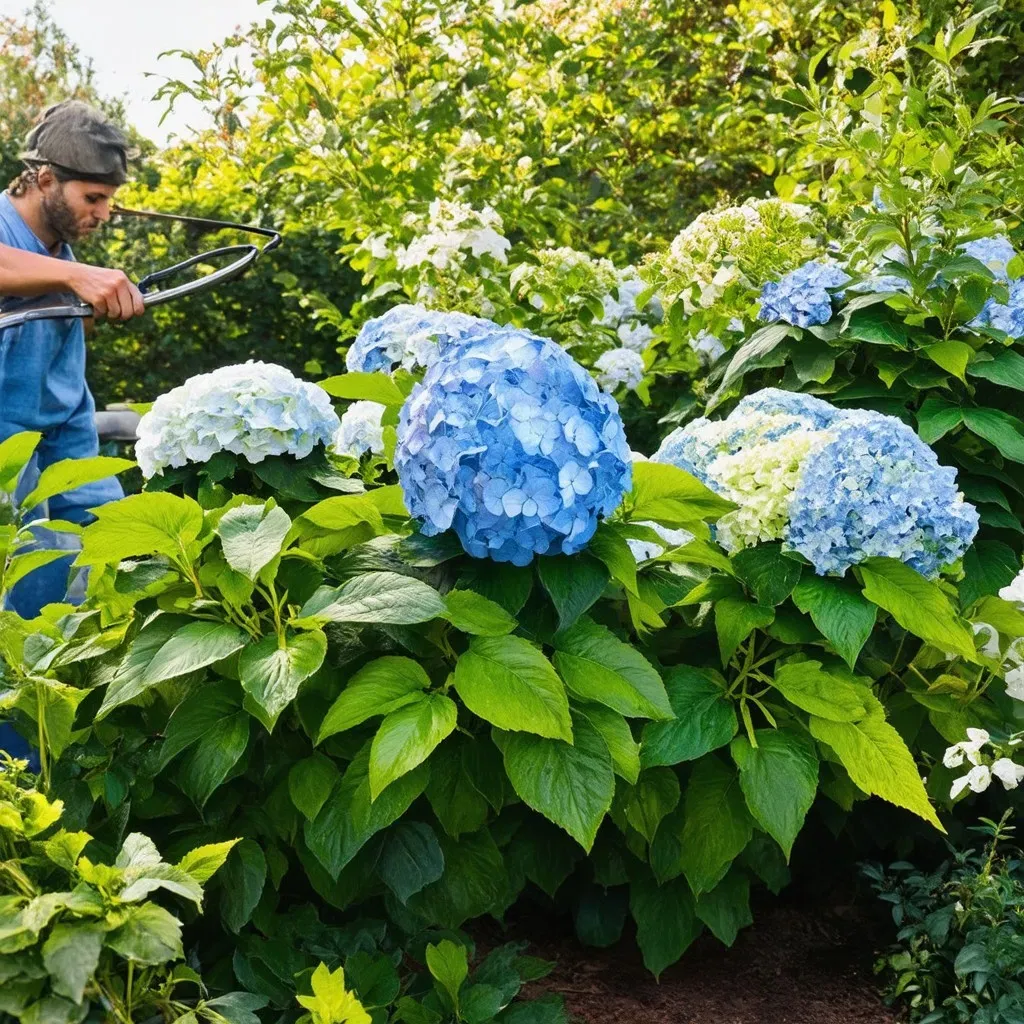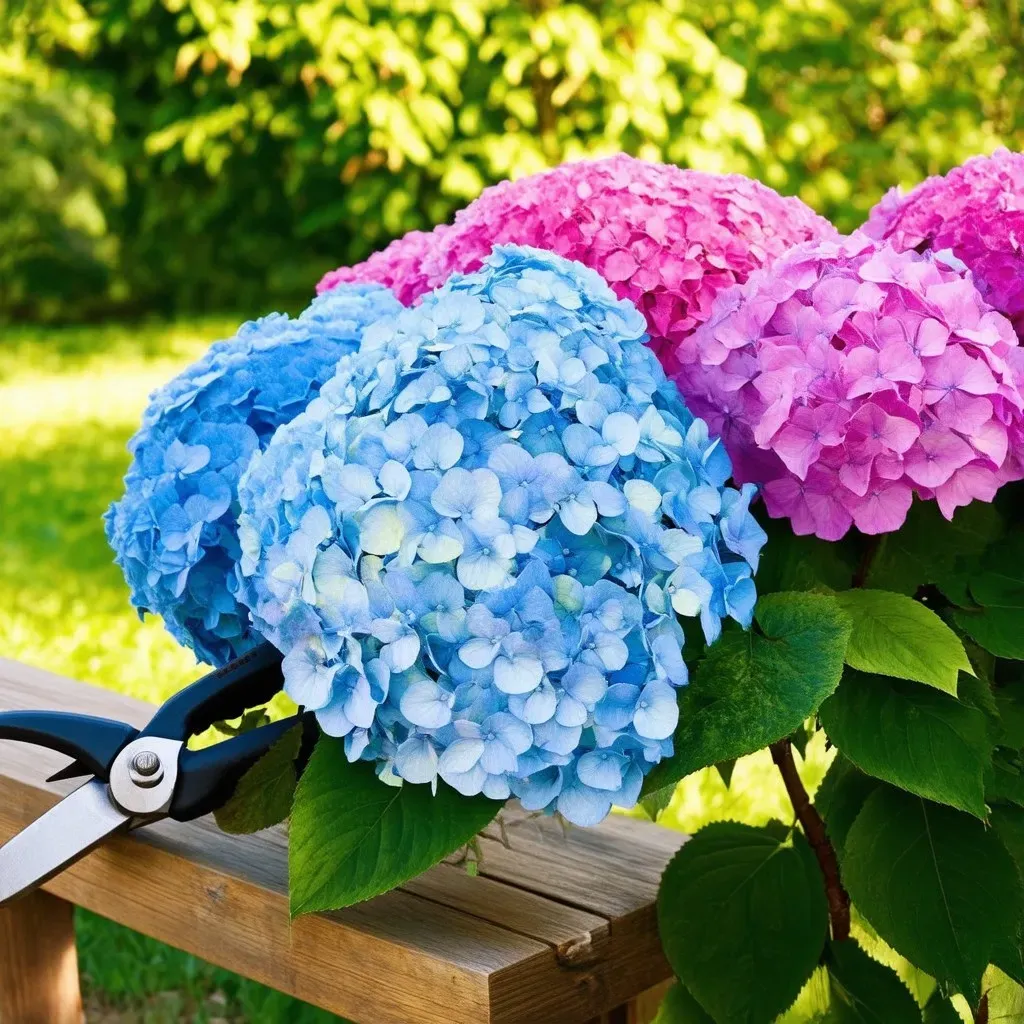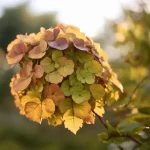How to prune hydrangeas is essential knowledge for gardeners seeking to maintain vibrant, healthy plants. Understanding the best practices and timing behind pruning hydrangeas can significantly impact the abundance and quality of blooms in your garden. This comprehensive guide will equip you with the necessary skills to prune different hydrangea-types/discover-the-alluring-types-of-hydrangeas-a-comprehensive-guide-to-hydrangea-varieties/">types of hydrangeas effectively, ensuring that your plants flourish year after year.
Understanding Hydrangea Types and Their Pruning Needs
Hydrangeas are diverse plants that can be categorized into several different species, each with unique pruning requirements. The two main groups are:
-
Old Wood Bloomers: These plants, including Bigleaf (H. macrophylla) and Oakleaf hydrangeas (H. quercifolia), produce flowers on the stems that grew the previous year. They should be pruned after they bloom, in late summer.
-
New Wood Bloomers: These hydrangeas, such as Panicle (H. paniculata) and Smooth hydrangeas (H. arborescens), create blooms on the current year’s growth. They can be pruned in late winter or early spring before the new growth begins.
| Hydrangea Type | Pruning Time | Blooming Type |
|---|---|---|
| Bigleaf (H. macrophylla) | Late summer | Old wood |
| Oakleaf (H. quercifolia) | Late summer | Old wood |
| Panicle (H. paniculata) | Late winter/spring | New wood |
| Smooth (H. arborescens) | Late winter/spring | New wood |
This classification will guide your pruning schedule and technique.
When to Prune Hydrangeas
Spring Pruning
For hydrangeas that bloom on new wood, such as Panicle and Smooth varieties, the best time to prune is in late winter or early spring. This timing allows for healthy new growth and will not disrupt blooming since these hydrangeas do not rely on last year’s growth.
Summer Pruning
If you missed spring pruning, it’s still possible to shape your hydrangeas in the summer, particularly after the blooms have faded. This is especially crucial for old wood bloomers like Bigleaf and Oakleaf hydrangeas, as pruning them too early can lead to missing the season’s flowers.
Fall Pruning
Pruning hydrangeas in the fall is generally not recommended, as this can expose the plants to winter damage. However, removing dead flowers post-bloom can be beneficial.
Key Considerations
- Weather conditions: Wait for dry days to avoid fungal infections.
- Pruning tool cleanliness: Always sanitize your tools before and after use.
Reference Video
Step-by-Step Guide to Pruning Hydrangeas
1. Tools You Will Need
Make sure you have the following tools handy for a successful pruning session:
- Bypass pruners or hand shears
- Loppers for thicker branches
- Gardening gloves
- A small saw for large stems
2. Identifying Dead or Damaged Wood
Before pruning, inspect the plant for dead, damaged, or diseased wood. This wood should be pruned back first to encourage new growth and enhance airflow around the plant.
3. Pruning the Plant
Depending on the hydrangea type, here’s how to proceed:
-
For Old Wood Bloomers:
- Remove any dead or weak stems.
- Prune back to healthy buds, typically about 12 inches from the ground.
- Avoid heavy pruning, as this can diminish your blooms for the next season.
-
For New Wood Bloomers:
- Cut back stems to about one-third of their height. This encourages robust new growth.
- Remove any spindly growth or weak stems found closer to the center.
4. Finishing Touches
After pruning, step back and assess the overall shape of the plant. Remove any additional growth that seems out of place. Finally, clean up around the base of the plant to reduce pest and disease potential.

Common FAQs About Pruning Hydrangeas
Q: How do I know when is it too late to cut back hydrangeas?
A: For old wood bloomers, pruning too late, especially into spring, could result in the loss of flowers for that growing season. As a rule of thumb, wait until after blooming to prune. For new wood bloomers, aim to complete pruning by early spring.
Q: What happens if I accidentally cut my hydrangea to the ground?
A: If you cut your hydrangea down to the ground, particularly for old wood bloomers, it may take a season or two to recover and flower again. These plants rely on the previous year’s wood for blooms, and without it, flowering will be delayed.
Q: Do you cut back hydrangeas in the fall?
A: It is generally not recommended to prune hydrangeas in the fall. Removing stems can expose them to winter chill and damage. However, you can deadhead (remove spent blooms).
Helpful Pruning Hydrangeas Tips
- Utilize the “cut back to a node” technique for shaping and encouraging bushier growth.
- Regular annual pruning leads to more vigorous plants.
- Ensure adequate spacing between plants to prevent overcrowding, allowing air circulation.
- Observe your hydrangeas throughout the growing season to understand their growth pattern and needs better.
References for Further Reading:

With this guide on how to prune hydrangeas, consider this a roadmap to healthy and vibrant blooms that will enhance your garden’s beauty. Start practicing these techniques, and over time, you will feel more confident about caring for your hydrangeas!


